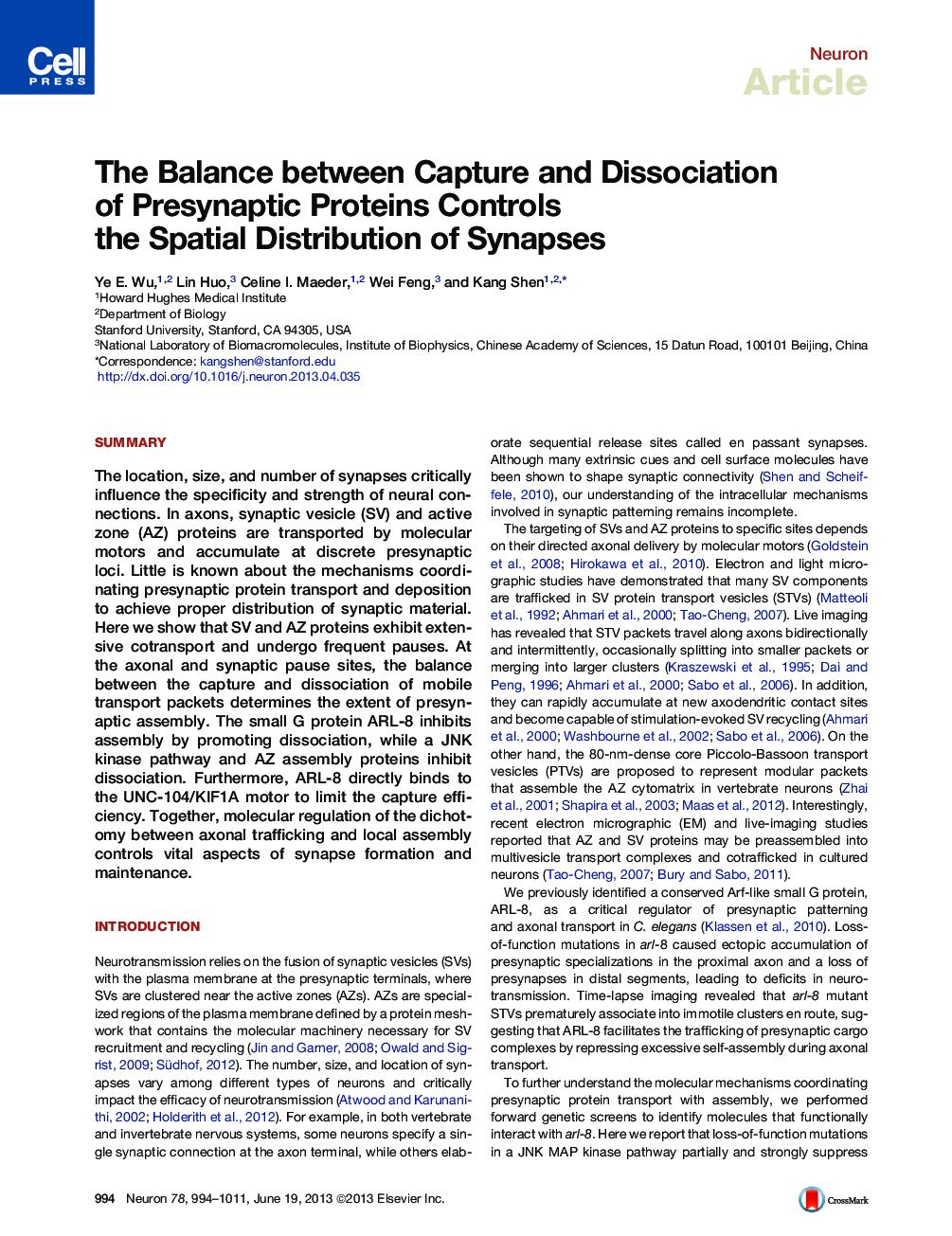| Article ID | Journal | Published Year | Pages | File Type |
|---|---|---|---|---|
| 4321154 | Neuron | 2013 | 18 Pages |
•The balance between transport and assembly controls synapse distribution•ARL-8 and a JNK pathway antagonistically regulate presynaptic protein dissociation•AZ proteins are cotransported with STVs and promote STV clustering during transport•UNC-104/KIF1A functions as an ARL-8 effector to regulate presynaptic cargo capture
SummaryThe location, size, and number of synapses critically influence the specificity and strength of neural connections. In axons, synaptic vesicle (SV) and active zone (AZ) proteins are transported by molecular motors and accumulate at discrete presynaptic loci. Little is known about the mechanisms coordinating presynaptic protein transport and deposition to achieve proper distribution of synaptic material. Here we show that SV and AZ proteins exhibit extensive cotransport and undergo frequent pauses. At the axonal and synaptic pause sites, the balance between the capture and dissociation of mobile transport packets determines the extent of presynaptic assembly. The small G protein ARL-8 inhibits assembly by promoting dissociation, while a JNK kinase pathway and AZ assembly proteins inhibit dissociation. Furthermore, ARL-8 directly binds to the UNC-104/KIF1A motor to limit the capture efficiency. Together, molecular regulation of the dichotomy between axonal trafficking and local assembly controls vital aspects of synapse formation and maintenance.
